Self-care behaviours among people with type 2 diabetes mellitus in South Asia: A systematic review and meta-analysis
- PMID: 35916498
- PMCID: PMC9346342
- DOI: 10.7189/jogh.12.04056
Self-care behaviours among people with type 2 diabetes mellitus in South Asia: A systematic review and meta-analysis
Abstract
Background: The burden of Type 2 Diabetes Mellitus (T2DM) in South Asian countries is increasing rapidly. Self-care behaviour plays a vital role in managing T2DM and preventing complications. Research on self-care behaviours among people with T2DM has been widely conducted in South Asian countries, but there are no systematic reviews that assess self-care behaviour among people with T2DM in South Asia. This study systematically assessed the studies reporting self-care behaviours among people with T2DM in South-Asia.
Methods: Adhering to the PRISMA guidelines, we searched six bibliographic databases (Scopus, PubMed, CINAHL, Embase, Web of Science, and PsychInfo) to identify the relevant articles published between January 2000 through March 2022. Eligibility criteria included all observational and cross-sectional studies reporting on the prevalence of self-care behaviours (ie, diet, physical activity, medication adherence, blood glucose monitoring, and foot care) conducted in South Asian countries among people with T2DM.
Results: The database search returned 1567 articles. After deduplication (n = 758) and review of full-text articles (n = 192), 92 studies met inclusion criteria and were included. Forward and backward reference checks were performed on included studies, which resulted in an additional 18 articles. The pooled prevalence of adherence to blood glucose monitoring was 65% (95% CI = 49-80); 64% for medication adherence (95% CI = 53-74); 53% for physical activity (95% CI = 39-66); 48% for diet (95% CI = 38-58); 42% for foot care (95% CI = 30-54). About a quarter of people with T2DM consumed alcohol (25.2%, IQR = 13.8%-38.1%) and were using tobacco products (18.6%, IQR = 10.6%-23.8%).
Conclusions: Our findings suggest that the prevalence of self-care behaviours among people with T2DM in South Asia is low. This shows an urgent need to thoroughly investigate the barriers to the practising of self-care and design and implement interventions to improve diabetes self-care behaviour among people with T2DM in South Asia.
Copyright © 2022 by the Journal of Global Health. All rights reserved.
Conflict of interest statement
Disclosure of interest: The authors completed the ICMJE Unified Competing Interest Form (available upon request from the corresponding author) and declare no relevant interests.
Figures
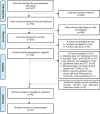
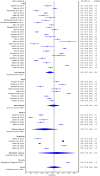
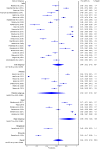
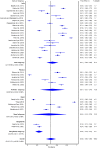

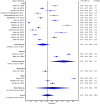
Similar articles
-
Adherence to self-care behaviours and associated barriers in type 2 diabetes patients of low-and middle-income countries: a systematic review protocol.Syst Rev. 2017 Feb 27;6(1):39. doi: 10.1186/s13643-017-0436-4. Syst Rev. 2017. PMID: 28241863 Free PMC article.
-
A systematic review of adherence to diabetes self-care behaviours: Evidence from low- and middle-income countries.J Adv Nurs. 2019 Dec;75(12):3374-3389. doi: 10.1111/jan.14190. Epub 2019 Sep 10. J Adv Nurs. 2019. PMID: 31453637
-
Beyond the black stump: rapid reviews of health research issues affecting regional, rural and remote Australia.Med J Aust. 2020 Dec;213 Suppl 11:S3-S32.e1. doi: 10.5694/mja2.50881. Med J Aust. 2020. PMID: 33314144
-
Psychological interventions to improve self-management of type 1 and type 2 diabetes: a systematic review.Health Technol Assess. 2020 Jun;24(28):1-232. doi: 10.3310/hta24280. Health Technol Assess. 2020. PMID: 32568666 Free PMC article.
-
Impact of Type 2 Diabetes Mellitus with a Focus on Asian Indians Living in India and Abroad: A Systematic Review.Endocr Metab Immune Disord Drug Targets. 2023;23(5):609-616. doi: 10.2174/1871530322666220827161236. Endocr Metab Immune Disord Drug Targets. 2023. PMID: 36043735
Cited by
-
Knowledge-Behavior Relationships and Technology Adoption Among Patients With Diabetes: A Mixed-Methods Analysis of Smart Foot Care Technology.J Foot Ankle Res. 2025 Jun;18(2):e70051. doi: 10.1002/jfa2.70051. J Foot Ankle Res. 2025. PMID: 40347486 Free PMC article.
-
Association between Perceived Protection Motivation, Preventive Behaviors, and Biomarkers among Diabetic Patients in Rural Areas of Thailand.Clin Pract. 2023 Nov 13;13(6):1400-1412. doi: 10.3390/clinpract13060126. Clin Pract. 2023. PMID: 37987427 Free PMC article.
-
The Impact of the COVID-19 Pandemic on Diabetes Self-Management in Saudi Arabia.Healthcare (Basel). 2024 Feb 22;12(5):521. doi: 10.3390/healthcare12050521. Healthcare (Basel). 2024. PMID: 38470632 Free PMC article.
-
Adverse drug events associated with insulin glargine: a real-world pharmacovigilance study based on the FAERS database.Front Pharmacol. 2025 Apr 28;16:1563238. doi: 10.3389/fphar.2025.1563238. eCollection 2025. Front Pharmacol. 2025. PMID: 40356973 Free PMC article.
-
Psychometric testing of the cross-culturally adapted Thai version of the Self-Care Self-Efficacy Scale version 3.0 in individuals with chronic illnesses.Int J Nurs Sci. 2024 Aug 13;11(4):473-484. doi: 10.1016/j.ijnss.2024.08.010. eCollection 2024 Sep. Int J Nurs Sci. 2024. PMID: 39830916 Free PMC article.
References
-
- World Health Organization Diabetes 2020. Available: https://www.who.int/news-room/fact-sheets/detail/diabetes. Accessed: 7 March 2021.
-
- International Diabetes Federation. IDF Diabetes Atlas (10th Ed.): International Diabetes Federation, Brussels, Belgium; 2021. Available: www.diabetesatlas.org. Accessed: 21 March 2021.
-
- World Health Organization. GLOBAL REPORT ON DIABETES 2016. Available: https://apps.who.int/iris/bitstream/handle/10665/204871/9789241565257_en.... Accessed: 11 February 2021.
-
- The World Bank. World Bank Country and Lending Groups 2021. Available: https://datahelpdesk.worldbank.org/knowledgebase/articles/906519-world-b.... Accessed: 21 March 2021.
Publication types
MeSH terms
Substances
LinkOut - more resources
Full Text Sources
Medical
Miscellaneous
